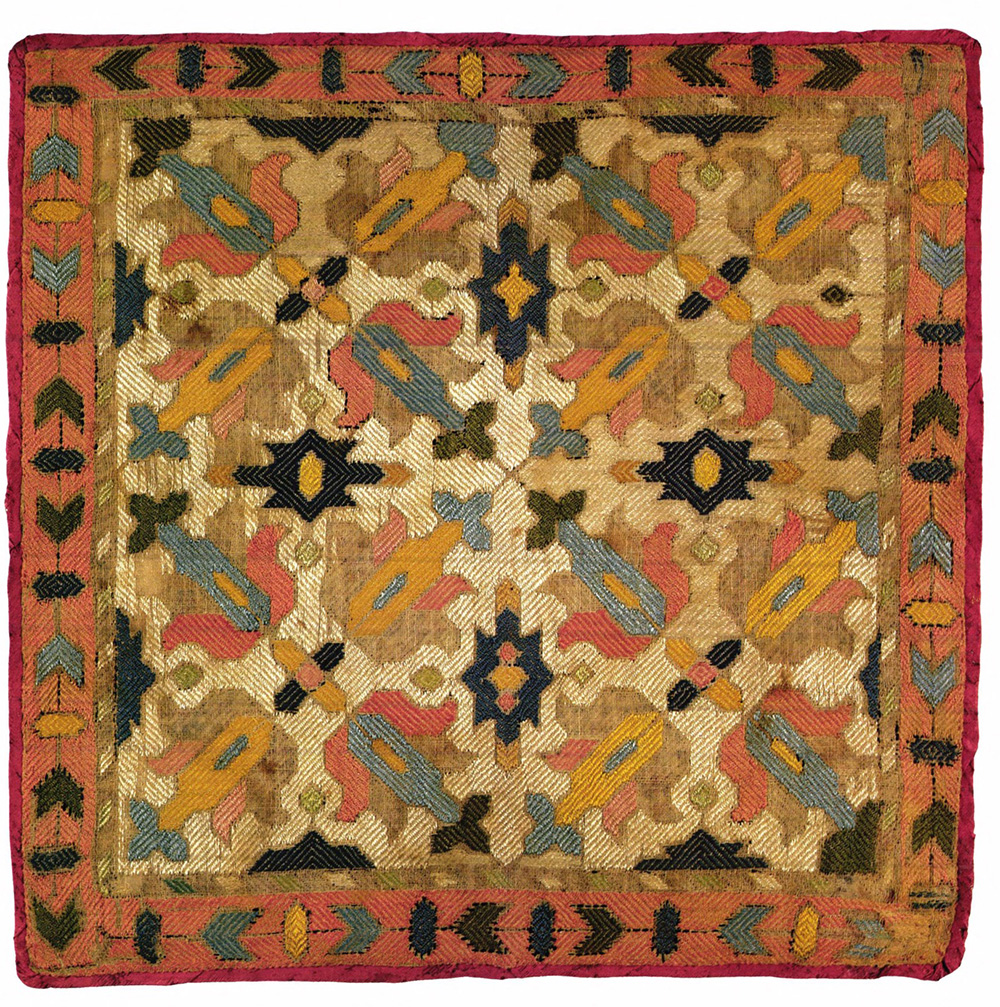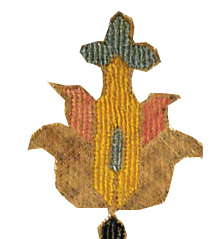This petite 18th-century Azerbaijani silk embroidery, probably from the
Late Safavid or early Khanate period, exemplifies the refined synthesis of
Safavid court aesthetics with regional Caucasian textile traditions.
Executed in vividly dyed silk threads on a shimmering ground, the
composition is dominated by a dynamic array of diagonal tulip motifs, each
rendered in a stylized form with angular side petals and a tripartite
crown. These motifs are meticulously aligned to create a rhythmic lattice
that pulses with movement and color. Interspersed throughout the field are
dark blue cartouches, their bold, geometric profiles and contrasting
yellow centers anchoring the composition with visual gravity. The
interplay between floral vitality and architectural form is further
enhanced by a simple border of alternating chevrons and baklava motifs,
echoing the internal dynamism while framing the textile in a continuous,
protective rhythm. Both ornamental and symbolic, this embroidery reflects
the opulent material culture of the Caucasus in an era marked by political
transition and artistic continuity.


|


